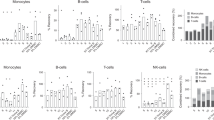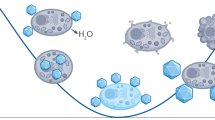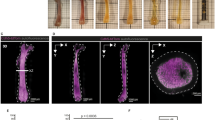Abstract
DIMETHYL sulphoxide was used by Lovelock and Bishop1 to protect bovine erythrocytes against the damaging effects of freezing to, and thawing from, low temperatures. The bovine erythrocyte is impermeable to glycerol, which does not protect it from the damage caused by freezing. Dimethyl sulphoxide has recently been shown to protect mouse bone marrow from the damaging effects of freezing to −79° C. (ref. 2). After thawing, the protected cells retained between 50 and 60 per cent of their ability to synthesize lipids and proteins. Fluorescence microscopy with acridine orange revealed the presence of many intact erythroid and myeloid cells. It has now been demonstrated that mouse bone marrow stored for one month at −79° C. in the presence of dimethyl sulphoxide will prevent the death of lethally irradiated mice.
This is a preview of subscription content, access via your institution
Access options
Subscribe to this journal
Receive 51 print issues and online access
$199.00 per year
only $3.90 per issue
Buy this article
- Purchase on SpringerLink
- Instant access to full article PDF
Prices may be subject to local taxes which are calculated during checkout
Similar content being viewed by others
References
Lovelock, J. E., and Bishop, M. W. H., Nature, 183, 1394 (1959).
Ashwood-Smith, M. J., J. Physiol., 155, 26 P (1961).
Polge, C., and Lovelock, J. E., Vet. Rec., 64, 396 (1952).
Author information
Authors and Affiliations
Rights and permissions
About this article
Cite this article
ASHWOOD-SMITH, M. Preservation of Mouse Bone Marrow at −79° C. with Dimethyl Sulphoxide. Nature 190, 1204–1205 (1961). https://doi.org/10.1038/1901204a0
Issue date:
DOI: https://doi.org/10.1038/1901204a0
This article is cited by
-
A simple cryopreservation method of human blood for chromosome study
Japanese Journal of Human Genetics (1981)



